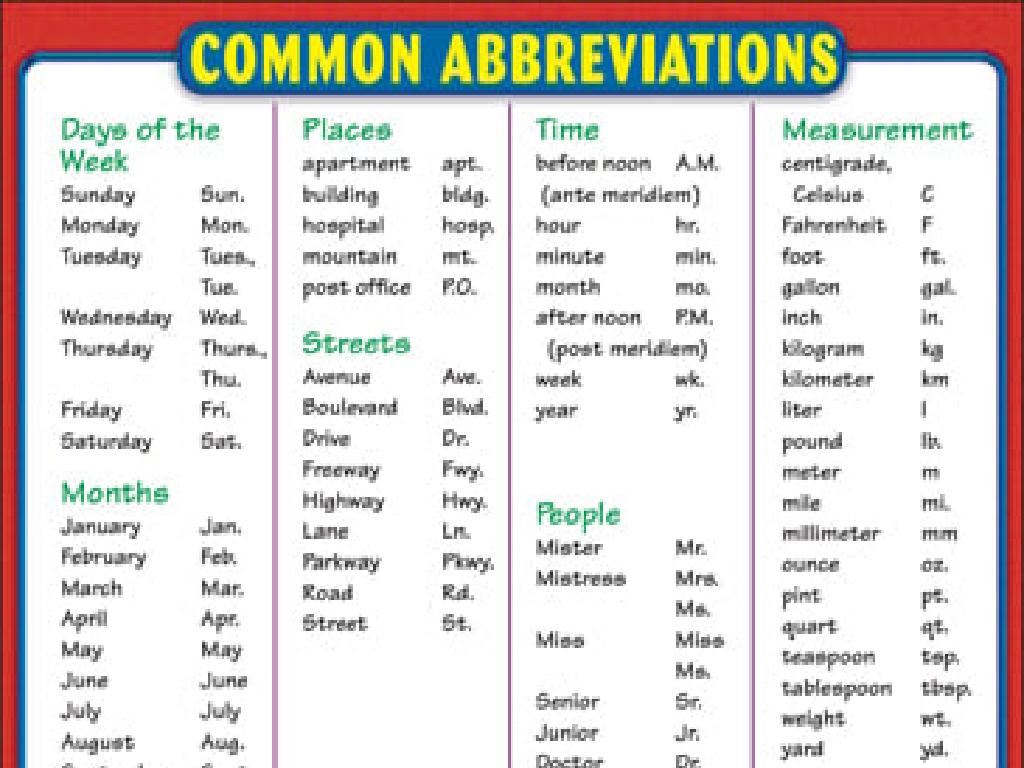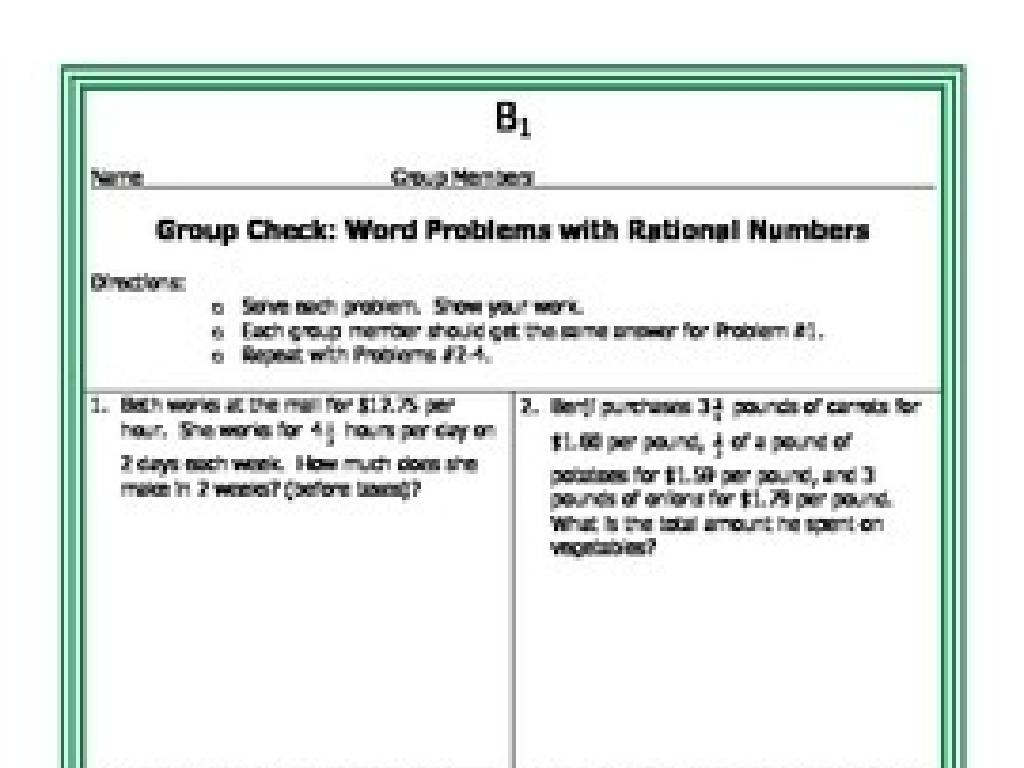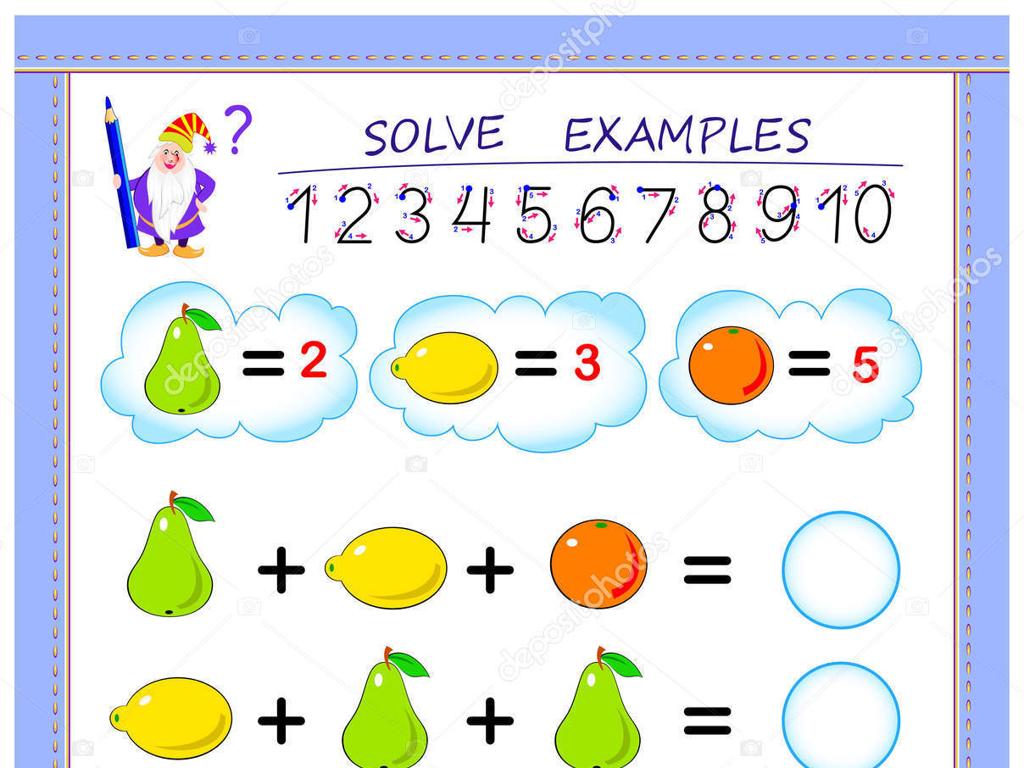Commas With Coordinate Adjectives
Subject: Language arts
Grade: Sixth grade
Topic: Punctuation
Please LOG IN to download the presentation. Access is available to registered users only.
View More Content
Commas with Coordinate Adjectives
– Role of punctuation in writing
– Punctuation helps organize and convey meaning clearly.
– Commas bring clarity
– Commas help avoid confusion, making sentences easier to understand.
– Coordinate adjectives explained
– Adjectives that equally describe a noun and can be switched in order.
– Using commas between adjectives
– Place a comma when two adjectives modify a noun in a similar way.
|
This slide introduces the concept of using commas with coordinate adjectives, which is a key component of punctuation in writing. Emphasize the importance of punctuation in making writing clear and understandable. Explain that commas can change the meaning of a sentence and that they are crucial for clarity, especially when using multiple adjectives. Define coordinate adjectives as adjectives that equally describe a noun and can be reordered without changing the sentence’s meaning. Provide examples, such as ‘a dark, stormy night’ or ‘a happy, excited crowd,’ and explain that if you can put ‘and’ between the adjectives or switch their order without altering the meaning, they are coordinate and should be separated by a comma. Encourage students to practice with their own examples.
Understanding Commas in Coordinate Adjectives
– What is a comma?
– A punctuation mark signaling a pause in a sentence.
– Commas’ role in meaning
– Incorrect comma use can alter sentence meaning.
– Commas in different contexts
– Used in greetings, lists, and to separate adjectives.
– Coordinate adjectives & commas
– When two adjectives equally describe a noun, separate them with a comma.
|
This slide introduces the basic concept of a comma and its importance in writing. Emphasize that a comma represents a pause in speech and is crucial for clarifying the meaning of sentences. Provide examples of how commas are used in various contexts such as in greetings (e.g., ‘Hello, John’), in lists (e.g., ‘We need eggs, milk, and bread’), and when using coordinate adjectives (e.g., ‘The quick, brown fox’). Highlight that when two adjectives are used together to equally describe a noun, a comma should be placed between them to indicate that each adjective independently modifies the noun (e.g., ‘It was a long, exhausting day’). Encourage students to think of their own examples and understand how the omission or incorrect placement of commas can change the meaning of a sentence.
Understanding Adjectives and Punctuation
– Define adjectives
– Words that describe or modify nouns, e.g., ‘happy dog’, ‘blue sky’.
– Role of adjectives in sentences
– They add detail to sentences, making them more interesting and informative.
– Compare sentences with adjectives
– ‘The dog barked.’ vs. ‘The loud, angry dog barked.’
– Analyze impact of adjectives
– Notice how adjectives can change the image or feeling a sentence conveys.
|
This slide introduces adjectives and their importance in sentence construction. Begin by defining adjectives as words that describe or give more information about nouns. Explain how they can change the meaning of a sentence and make it more vivid for the reader. Provide examples of simple sentences and then add adjectives to show the difference they make. Discuss how adjectives can affect the imagery and emotions conveyed by a sentence. Encourage students to think of their own examples and consider the effect of different adjectives on the nouns they describe.
Mastering Commas with Coordinate Adjectives
– Define coordinate adjectives
– Adjectives that are equal and describe the same noun, e.g., ‘The quick, nimble fox.’
– Identify them in sentences
– If you can insert ‘and’ between them or switch them around, they’re coordinate.
– Use commas to separate
– Place a comma between adjectives that can be joined by ‘and’.
– Practice with examples
|
This slide introduces the concept of coordinate adjectives, which are adjectives of equal status that modify the same noun. Teach students how to determine if adjectives are coordinate by seeing if they can insert ‘and’ between them or switch their order without changing the meaning. Emphasize the use of commas to correctly separate these adjectives in a sentence. Provide ample examples and encourage students to come up with sentences of their own to apply this rule. This will help solidify their understanding and ability to use commas effectively with coordinate adjectives.
The Comma Test for Coordinate Adjectives
– Use the ‘and’ test for adjectives
– If ‘and’ fits between adjectives, they’re coordinate
– Try the ‘order swap’ test
– If adjectives make sense in a different order, they’re coordinate
– Examples of comma tests
– ‘The quick, brown fox’ vs. ‘The quick and brown fox’
– Practice with your own sentences
|
This slide introduces two tests to determine if adjectives are coordinate, which would require a comma between them. The ‘and’ test involves inserting the word ‘and’ between the adjectives. If the sentence still makes sense, the adjectives are coordinate. The ‘order swap’ test checks if the adjectives can be swapped without changing the meaning of the sentence. Provide clear examples to illustrate both tests. Encourage students to come up with sentences and apply these tests to identify coordinate adjectives. This activity will help them understand how to use commas correctly with adjectives in their writing.
Commas with Coordinate Adjectives
– Identify coordinate adjectives
– Adjectives that can be joined with ‘and’ or switched around
– Add commas in examples
– Place a comma between adjectives that are equal and interchangeable
– Discuss commas’ impact on meaning
– Commas clarify if adjectives modify nouns independently
– Practice with sentences
|
This slide is aimed at helping students understand the use of commas with coordinate adjectives. Coordinate adjectives are adjectives that appear in sequence to modify the same noun and are equally important, which means they can be connected with ‘and’ or their order can be switched without changing the sentence’s meaning. Students should practice adding commas to sentences with coordinate adjectives to see how it affects the clarity and meaning of the sentences. For example, ‘The big, red ball’ versus ‘The big and red ball.’ Discuss with students how omitting or including commas can change the nuance of the sentence. Provide several sentences for students to practice identifying and punctuating coordinate adjectives correctly.
Class Activity: Comma Placement with Coordinate Adjectives
– Learn to insert commas correctly
– Pair up for a comma worksheet
– Work together to find where commas belong
– Share and discuss answers with the class
– Explain your reasoning for comma placement
– Understand the rules of comma usage
|
This activity is designed to reinforce the students’ understanding of using commas with coordinate adjectives. Students will pair up to complete a worksheet where they insert commas in sentences that contain lists of adjectives. After completing the worksheet, each pair will share their answers with the class and discuss the reasoning behind their comma placements. This peer learning experience will help students see different perspectives and understand the common rules for comma usage. As a teacher, be prepared to clarify the rules and provide examples when necessary. Possible activities include: 1) Comparing sentences with and without commas, 2) Creating sentences with a series of adjectives, 3) Correcting sentences with incorrect comma usage, 4) Explaining why a comma is or isn’t needed in given examples.
Concluding Commas with Coordinate Adjectives
– Recap comma rules with adjectives
– Remember, only use a comma between adjectives that are equal and reversible.
– Importance of commas for clarity
– Commas remove ambiguity, making writing easier to understand.
– Practice correct comma usage
– Try writing sentences with lists of adjectives, both coordinate and cumulative.
– Encourage accurate punctuation
|
As we wrap up, let’s review the key rules for using commas with coordinate adjectives. These rules are crucial for clear communication in writing. Emphasize the importance of punctuation in making sentences clear and easy to read. Encourage students to always check their work for correct comma usage, especially with adjectives. Provide examples of sentences with and without commas to illustrate the difference in clarity. Finally, motivate the students to take pride in their writing by using commas accurately, enhancing their overall communication skills.





